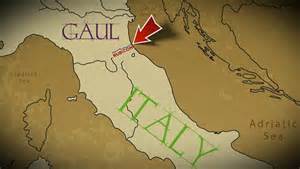–Casca, a conspirator (The Tragedy of Julius Caesar, Act I, Sc. 2)
We all can feel like Casca when we’re trying to read Shakespeare. It’s like we’re pushing slowly through a foreign language because IT IS, essentially, a foreign language. A foreign language with its own slang, inside jokes, and cuss words–AND iambic pentameter.
Not for the faint of heart.
As I mentioned in my earlier post (“Isn’t That Tragic?”), I’m not a huge Shakespeare fan. I appreciate it, but I’m not going to pick it up for giggles.
Over the years, I’ve picked up some survival tips that help me appreciate more and struggle less. Give them a try, especially those of you with Julius Caesar to finish!
- Skim the opening scene and/or any scene between servants or “low” characters. Why? Frankly, those passages are usually for comic relief and involve complicated puns that rely on that “foreign language,” Elizabethan English. If you get caught up in trying to suss out each line in modern English and piece out each joke (some are extended), you will be frustrated. You will use up all your juice in the first scene, which could very well turn out to be tangential.
Instead: Skim these parts. Come back to them later. They’re not meaningless or pointless–they’re just better approached after you’ve gotten your bearings in the play. - Stay out of the weeds. And by weeds, I mean footnotes. Why? Footnotes are the equivalent of embedded links on the internet. Do you want to “click here” and be taken away from the main page? Then you have to read links that may or may not actually add value. And click back to return to your main focus. And hope you remember the last sentence you read. Yep, it’s disruptive, and the payoff is uncertain.
Instead: Onward ho! Keep chugging through the lines, pausing to summarize longer speeches. Stop for footnotes only when you’ve come to a standstill because you truly have no idea what a specific word/phrase means. Alternatively, you can chug through without footnotes even when you are confused, and then pause and reread entire scenes or speeches with their accessories as you finish them.
3. Yes, I said to reread. Can’t be denied. The good news is that rereading will pay off immensely, and every time you return to a passage, you will find it so much clearer.
4. I’ve been saying footnotes. The truth is, most new editions have given up on footnotes and replaced them with sidenotes, which are easier to consult in the normal course of reading. Usually they are on the page facing the text and allow for pretty easy consultation. Be sure to use an edition with sidenotes. I can’t tell you how much easier I find them. See the illustrations below for examples of side and footnotes (taken from my actual books!).


How do you keep from drowning in Shakespeare? Help out your fellow readers in the comments below.



